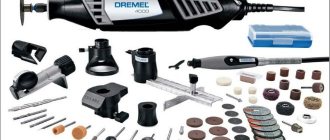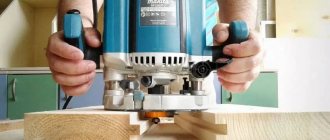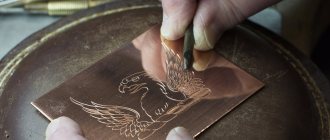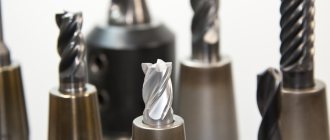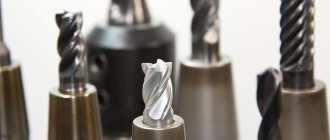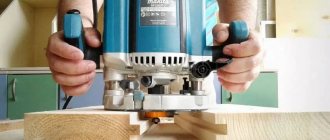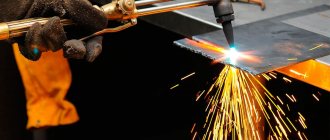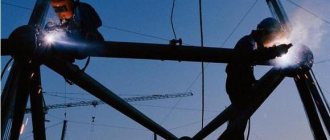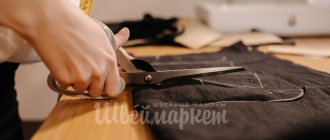Among the various metal processing techniques, milling has gained the most popularity. Milling can be used to work with workpieces made of materials of any strength and involves cutting layers of metal using a rotating cutter. Metal milling can be performed both on conventional machines and on equipment equipped with CNC, which allows producing products with minimal dimensional errors in a short time.
Technology development
Metal milling is a method invented in China in 1668. Initially, instead of strong metal, stone was used to organize the frame, and the role of the engine was played by mules, which set the mechanism in motion.
With the industrial revolution, electrification, the method of metalworking was improved. Milling machines with electric motors have become widespread in industrial production. Eli Whitney is considered an innovator, who thus modernized one of his factories in the United States of America. Despite all the advantages, including reliability and ease of repair, the equipment was bulky and crude. Only two generations later, the entrepreneur’s grandchildren replaced it with a more modern one.
A milling machine similar to the modern one was developed in 1835 by the American. A special feature of the machine offered by the brand is the use of a flat belt in its design, which transmits rotational motion to the cutter. Near the pulley, the developers placed a gear mounted on a mandrel. The cutter was attached to the latter. The machine was equipped with a system for moving the frieze in a vertical plane, which speeds up metal processing. The disadvantage is that only flat-shaped workpieces could be processed on such equipment.
You can order metal milling in Krasnodar by phone and address indicated in the header of the site.
The technology, having proven its effectiveness in the weapons industry, quickly spread to other industries and began to be used not only for military but also for civilian purposes. The first machine for non-military production was created in America. It was intended for the production of nuts - edges were sharpened using a frieze.
The revolution was the refusal to use wood in the design of a milling machine in favor of steel. I came up with this solution 20 years later. Innovation has made it possible to reduce the size of equipment, increase service life, reduce the frequency of maintenance and replacement of parts. Using steel machines, it became possible to process stronger alloys and produce massive blanks and parts. The appearance of a lead screw with a flywheel increased the processing speed, which had a positive effect on labor productivity.
With the advent of the Lincoln machine, the era of the modern milling method began. True, such equipment required the direct participation of a mechanic in the process (drill selection, part fastening, movement, adjustment). The human factor is always fraught with errors; as a result, due to defects, defects, malfunctions, and breakdowns, it was not possible to receive the same batch of goods. The main problem was with curved surfaces, which required special care and highly qualified craftsmen.
Automation of milling occurred with the advent of computer technology, on the basis of which digital and numerical control panels are created. CNC milling machines are characterized by precision processing, which is due to the absence of the influence of the human factor. Based on the data received and the layout, the program determines the optimal mode, processing speed, and method of movement of the frieze in all planes.
Advanced equipment is equipped with a laser cutter that can provide milling with increased accuracy.
Milling of titanium products
When processing titanium using milling equipment, it is necessary to take into account the fact that this metal has low thermal conductivity. Because of this, the processing process is complicated.
To make it easier to work with titanium and produce high-quality parts, it is necessary to take into account the opinion of experienced metalworking masters:
- When machining titanium, high-speed cutters are used.
- First, remove a large layer, smoothly moving to a thin one.
- The cutters must have a large number of teeth.
- During operation, observe the change in sharpening of the cutting part.
- After each pass, make a chamfer at an angle of 45 degrees.
- You need to start processing titanium in an arc.
- The diameter of the cutter should be 30% less than the diameter of the groove.
Before working with titanium, you need to make sure that the engine power is sufficient to process durable types of metal.
It is necessary to inspect the cutter in advance for defects and check the tension of the belts on the engine. Metal milling is one of the most famous processes in metalworking. It can be produced on mechanical machines and CNC equipment. However, when working with programmable machines, it is necessary to choose an experienced operator. Otherwise, the equipment will not function normally.
Purpose of milling processing
The metalworking method is universal. Thanks to the change of tools and technology, several procedures can be performed. Modern CNC milling machines are capable of working not only with metal, but also with glass, plastic, wood, and other materials, which significantly expands the scope of application.
Milling is the mechanical removal of a surface layer of a given thickness using a milling cutter, blades, or laser. The method allows:
- Sawing parts into several parts;
- Grind the surface with special nozzles with an abrasive coating;
- Carry out engraving, applying ornaments and patterns;
- Drill holes followed by cutting internal or external threads.
This is just a small list of actions available on a milling machine. The operator of a CNC machine always has an assortment of cutters available. The choice of multi-toothed cutting type depends on the task at hand. The cutting angle, which also affects processing, depends on the setting of the angle of attack of the frieze. Among the classic cutters: face, shaped, gear, cylindrical, end. There are others, but they are not so common and are used for specific jobs.
The advantages of milling have made it widespread. The machines are used for the production of massive and miniature parts for machine tools, metalworking, the automotive industry, and jewelry.
The technology allows you to process materials, regardless of their strength, just choose the right cutter and configure the equipment correctly.
Milling has also found application in shaped cutting of aluminum. High-tech metal, in demand in architecture, design, and electronics. This is due to sufficient flow, lightness, and other physical properties. Using a CNC machine allows you not only to perform shaped trimming of parts, but also to apply patterns and engraving without leaving burrs.
Milling of other materials is also becoming popular. Recently, three-dimensional milling of plastic has been gaining momentum. The technology is used for the production of car bodies and car parts.
Among the advantages of milling:
- Versatility;
- High processing speed;
- Low cost.
Vertical and horizontal milling
For milling, different equipment is used, which, depending on the nature of the manipulations, is divided into two types: vertical and horizontal. Each of them has its own application features, advantages and disadvantages.
Vertical milling
To perform this type of milling work, specialized vertical milling machines are used, the capabilities of which allow you to work in the horizontal and vertical planes, and carry out:
- drilling;
- making holes;
- countersinking.
They are used for processing not only metal, but also other materials, both in individual and continuous production. This equipment easily works even with cast iron and steel, allowing the production of high-quality spiral products, frames, gears, dies and more. Depending on the design, they can be manually controlled, CNC or fully automated.
The equipment received its name due to the vertically located spindle. Here the main movement is carried out by the cutter, and the workpiece is rotated only in accordance with the intensity of its processing or as needed. In this case, the movement of the workpiece directly on the milling table can be not only rectilinear, but also curved. The spindle head has the possibility of installation movement along special vertically located guides and moves together with the sleeve in the axial direction.
Depending on the design features, vertical milling machines are divided into two categories:
- Console - large-sized units with a massive console that allows drilling and work using end, cylindrical, face and shaped cutters. Due to restrictions on the position of free space, they are used to produce parts with low weight and workpieces of small size.
- Non-cantilever - in them the table moves along the guides of the main frame, fixed on the foundation, which allows for high rigidity, and therefore accuracy in processing products. Due to the absence of a console, this equipment can equip large workpieces and produce large-sized parts. Non-cantilever type machines are indispensable for processing not only vertical, but also inclined surfaces.
Horizontal milling
Milling work in the horizontal plane is carried out on special horizontal milling machines, in which the spindle is located horizontally. Such equipment can work with angle, disk and cylinder cutters, as well as prefabricated equipment with replaceable cutters. In addition to standard horizontal machines, there are universal ones with the ability to install tools of any type, designed not only for surface linear processing of metal, but also for complex cutting of recesses and grooves on rotating workpieces. Cutting is done at right angles and is best suited for forming grooves with rapid chip evacuation.
Up and down milling of metal
Two common milling methods, the features of which are included in the name. Climbing is a processing method when the cutter rotates in the same direction as the workpiece. Among the advantages:
- Natural fastening of the workpiece to the bed, as a result there is no need to additionally secure the product.
- Reduced wear of teeth at the cutting edge, since movement along the edge less dulls the sharp end.
- Smooth removal of the allowance, as a result, the ideal level of roughness is maintained on the cover.
- The chips do not fall under the knife and are easily moved to the side, thus increasing labor productivity.
Among the negative aspects of down milling:
- You cannot perform roughing work or mill rough surfaces that have not undergone preliminary preparation.
- Solid fractions can quickly dull a cutter;
- To eliminate vibration, you should use a machine with a reinforced frame;
- Minimum number of gaps.
Up milling is a surface processing process where the cutter moves towards the workpiece. With this method, the milling speed increases, while the wear of equipment and consumables increases.
Advantages:
- Soft cutting of chips with low load on the machine.
- During processing, the workpiece is subjected to minimal deformation, which has a positive effect on the consumer properties of the finished product.
Flaws:
- The cutting force during the process is aimed at tearing the workpiece off the table, so reinforced fixation is needed.
- Processing occurs at reduced speeds, otherwise the frieze will wear out quickly.
- Chips are diverted in an inconvenient direction and may fall into the cutting zone.
Technical problems of milling and ways to solve them
Despite the use of technologically advanced milling machines, this process may be accompanied by the emergence of a number of problems that have different reasons for their occurrence and solutions. One of the possible problems is injury to the operator from flying metal shavings, which is easily solved by organizing a system for its removal. But there are more significant problems for the milling process. These include an active reduction in the working life of the equipment and damage to the surface of the workpiece during processing.
Reduced tool life
This category of important technical and technological problems of milling includes:
- Rapid wear of the edge of the cutting equipment. As a rule, it occurs as a result of incorrect feeding of the material being processed, installation of inappropriate equipment or its rotation speed.
- Severe chipping of the edge of the cutter, caused by the wrong choice, installation of the spindle at a different angle, or too high a rotation speed. Also, the reasons for the formation of this problem can be caused by excessive pressure from the cutter or the poor condition of the surface being processed, which has not undergone the necessary preparation.
- Complete failure, which most often results from the use of a tool with insufficient strength and thermal shock. This problem can be avoided by using the right equipment and air or liquid cooling to regulate temperature and lubricate the work area. More rare causes of cutter failure include the absence or poor removal of chips, which leads to secondary cutting and transfer of an impressive load to the tool.
- The formation of build-up on the cutting edge and the adhesion of metal chips, which occurs when cutting soft metals (for example, aluminum) and using a cutter with an incorrectly selected angle. Solved by changing equipment.
Damage to the treated surface
The most common damage to workpiece material includes:
- The formation of hardening as a result of an increase in temperature in the cutting area with an increase in strength and a decrease in ductility. The situation can be avoided by using timely cooling of the part.
- Deviation from verticality, which usually occurs when the edge of the cutting equipment is heavily worn or when the cutting mode is incorrectly selected.
- Non-compliance with dimensions resulting from poor fixation, insufficient rigidity of the tool, unacceptable level of vibration or an increase in the replacement interval. The problem is corrected by changing the cutter, using a more rigid workpiece clamping force, and using vibration dampers.
- Chipping and the formation of unevenness, which are the result of incorrect setting of speed and depth, as well as lack of uniformity of feed of the workpiece.
A preliminary study of possible accompanying negative phenomena, their causes and solutions, will allow you to choose the right equipment and operating mode, which will generally affect the quality and productivity of the work process.
Milling classifiers
Milling work is classified according to the type of frieze used. Among the common ones:
- End face. As a result of processing, grooves, blades, and undercuts are created. The ends are also trimmed.
- End To create recesses in vertical and horizontal planes.
- Cylindrical. Designed for working with shaped or straight workpieces.
- Serrated - cutting teeth.
- Shaped. Using a special tool, the master cuts chamfers.
The list does not include all types of milling. Depending on the equipment, surface treatment is performed with a countersink, drill, cut-off cutters, double discs, etc.
There is an alternative classification based on the method of attaching the cutter: vertical, diagonal, horizontal.
Processing type
Depending on the nature of the processing carried out during the manufacturing process of parts, the technological process is divided into several steps:
- Material roughing is the initial removal of bulk chips to form the overall profile of the part. This finishing stage has a low accuracy class with allowances depending on the material of 3–7 mm.
- Semi-finishing is the subsequent type of cleaning with the removal of fine chips and the accuracy of the work performed from class 4 to class 6.
- Finishing – detailed high-precision finishing of class 6 or 8. In this case, the maximum allowance is from 0.5 to 1 mm, which ensures high quality of the formed surface.
Metal milling machines
The choice of a milling machine is individual and depends on the size, production features, and type of product being manufactured. Owners can purchase either a universal machine capable of performing the entire range of work, or several highly specialized ones that allow for step-by-step processing in the form of a conveyor, which has a positive effect on the overall productivity of the line.
In the first case, a numerically controlled machine is recommended. It will allow you to quickly change the program, thus personalizing the speed and cutting mode, based on the technical specifications.
CNC
The machine tool industry today offers hundreds of options for a wide variety of CNC machines for processing any materials. From the smallest for small home workshops, to the most powerful for industrial production.
The main series of such machines:
- lungs;
- professional;
- industrial;
- special.
Light ones (among them the lightest) cost from 150 thousand rubles.
Professional is an intermediate option between light and industrial options. These include wood milling and engraving machines costing from 200 thousand rubles. up to 600 thousand rubles.
Industrial - for continuous production, cost more than 1 million rubles.
Special ones are most often designed individually for specific tasks and details. These include machines for milling stones, as well as small, ultra-precise ones for jewelry.
Main types of cutters
Milling cutters are classified according to several parameters:
- According to the material for which they are intended for processing, in particular, for working on metal;
- By purpose: grooved, end, slotted;
- Shape: cone, cylinder, discosphere.
Design differences
The design feature divides cutters into several categories:
- Worm - cutting is performed with several edges of the cutter;
- Ring. Needed to create holes. Compared to conventional drilling, the processing speed increases approximately 4 times;
- End Used for cutting ledges and grooves;
- Shaped. They have two rows of blades;
- Angular. Suitable for milling uneven, angular, curved surfaces;
- Cylindrical with helical or straight teeth. The former are multifunctional, the latter are designed for processing straight workpieces;
- End - with cast, replaceable plates;
- Disc – designed for cutting steel sheets and cutting grooves.
Influence of milling modes on the result
If an outdated machine is used in production, manual reconfiguration will be required each time the type of processing is changed. In this case, it all depends on the qualifications of the master:
- The thickness of the layer that will be removed in one pass;
- Spindle speed;
- Feed direction, smooth movement of the workpiece.
The settings are usually listed in tables. But such calculations have an error, which does not always allow obtaining a finished product that meets the standard. Also, inaccurate settings, poor fastening, and incorrect choice of cutter can cause unacceptable vibration.
A CNC machine will help you avoid errors associated with the human factor.
Types of cutters for processing
Milling work is classified according to the type of cutting equipment used, which distinguishes the following methods and main types of milling:
- An end cutter, which is produced using an end mill, similar to a drill of short length and increased diameter, on the end of which 5 or more cutters are fixed along the entire circumference with different pitches and the same planting depth. Such equipment is used to form grooves, undercuts, windows, wells, as well as reverse milling, cutting ends, and forming more accurate dimensions of the workpiece.
- Cylindrical, necessary for adjusting the height of long and short edges, for example, the height of the channel ribs. In this case, the work is carried out with a universal-purpose screw cutter in the form of a horizontal roller, or with equipment with straight teeth for working on straight surfaces.
- Disc, carried out to form ordinary longitudinal grooves using a cutter resembling the cutting part of a circular saw.
- Angular, performed by a tool in the form of two truncated cones connected together, the angle of which corresponds to the angle of inclination of the groove on the product. The equipment can be made entirely of high-speed steel, or supplemented with insert cutters made of pobedit alloy for cutting metal of increased hardness.
- End, designed to create ledges of a certain size in both horizontal and vertical planes.
- Shaped, without which it is impossible to create products of non-standard shape. To do this, use pointed cutters with a complex profile and a sharp edge on the inside, or equipment with backed teeth.
In addition, there are other types: core cutters for producing large holes, hob cutters for processing material with several cutting edges at once, etc.
Process stages
The procedure for working with a cutter is the same, regardless of the type of machine. But a numerically controlled machine operates automatically and requires less operator action.
Basic procedure for manual equipment:
- The workpiece is mounted on the table;
- A cutter of the required type is installed in the spindle. At the same time, the angle and direction of attack are selected;
- Using handles, you can set the milling depth;
- The number of revolutions is set;
- The machine starts;
- During operation, the movement of the holder and headstock is adjusted.
Stages of working with a CNC machine:
- The product is mounted on the work site;
- The program is loaded into the control panel;
- The machine is put into operation.
The use of numerical control eliminates manual adjustment of the machine, which reduces reconfiguration time and eliminates the possibility of human error.
Areas of application of milling technology
In order for parts to be milled more accurately, different types of cutters are used in each case. Despite the fact that almost any material can be processed, most often it is still metal.
Thanks to modern machines equipped with CNC systems, the amount of scrap is significantly reduced. And numerical programs can significantly simplify management. Today, workpieces are made with maximum precision and a minimum amount of scrap, and all because the cutter has been replaced with a blade.
VT-metall offers services:
Using metal milling on CNC machines, you can do the following: cutting, grinding, engraving, applying special patterns, turning and other work related to various types of activities. The process uses several cutting multi-tooth cutters, and the type of work (horizontal, vertical) is determined depending on their mounting in the machine.
It must be said that milling can also be done at a certain angle, for which the knife is installed in the appropriate direction.
There are several processing methods, the choice depends on the type of product that is subjected to it. Various cutters are used in the work, for example, face, cylindrical, gear, end, shaped and more complex ones.
Milling can be used in various fields: mechanical engineering, metalworking, woodworking, jewelry production, as well as architecture and design.
This type of processing is used for metals of varying densities. In each individual case, a different cutter is selected. Thus, cylindrical types are used for milling sheet metal, and end types are used for asymmetrical cutting patterns.
That is, if it is necessary to process parts that have the correct shape, that is, rectangular, square, etc., the two above methods are used. The same profile product can be made with a cylindrical cutter and from the end.
The most popular today is aluminum milling, and all because this metal is used in many areas, for example, in interior design, exclusive design, production of advertising elements, camera equipment, etc.
Its widespread use is due to the fact that it is lightweight, durable, and has a low melting point. In addition, any part can be easily cut from it.
Using this type of milling, which is carried out on modern high-tech machines, you can apply inscriptions, patterns, relief, etc. to souvenirs, kitchen and marketing products. At the same time, they are distinguished by their correct shape, dimensions, ideal edges and the absence of burrs.
Accompanying phenomena
When milling, several points arise that can affect the quality of work:
- Shavings. If chips get into the contact zone where cutting occurs, it is fraught with defects. It can also damage the cutting edge.
- Hardening. An increase in the surface temperature of the workpiece reduces its strength, as a result the consumer properties of the finished product deteriorate.
- Friction and vibration. Natural processes that occur during the milling process. They slow down the processing speed and lead to wear on the cutter.
Milling materials
The cutter material must be stronger than the material being processed. If this is not a problem for soft materials, then in metalworking special heavy-duty alloys are used to make cutters. Some machines are equipped with a system for lubrication of the machined surface and the cutter with an oil-water emulsion. It lubricates the cutting area, removes small chips and cools the cutter.
Tree
This is a soft material. It is processed both by hand milling machines and by powerful industrial machines.
A hand router can be used to do almost all types of milling work, but in small quantities.
On industrial machines, moldings are made in-line - lining, floorboards with a groove/tenon connection, baseboards, corners, round products in two passes with a semicircular cutter, etc.
Despite the softness of the material, cutters are made of hard alloys so that they retain their sharpness for a long time and are less abraded by friction. As a rule, these are “high-speed cutters”, alloys such as R6M5, R6MZ and R12 (HSS in Western markings) - steel containing tungsten, molybdenum and vanadium in different proportions.
Plywood
Plywood sheets are large-sized material of small thickness. Sometimes it is necessary to mill edges, cut out non-through and through ornaments, curved or straight lines. Hand-held routers are better suited for working with large sheets. It is better to move a small tool relative to the sheet than to move a bulky sheet relative to a stationary router.
For plywood, universal cutters are used (hardwood, plywood, MDF, etc.). The hard adhesive resins in plywood can dull the cutter faster than when working with wood. Therefore, it is better to use high-quality cutters made of harder alloys.
Furniture board
Furniture board is wood, wooden beams glued together. Processed in the same way as wood. If the sheet is large, it is better to use a hand router, as is the case with large sheets of plywood.
MDF, OSB, laminated chipboard (LDSP) and plain chipboard
These are materials containing wood similar in structure. They are based on crushed wood, sawdust or shavings, compressed and glued under pressure at a certain temperature with adhesive resins. The difference is in the size of the wood particles and the manufacturing method. They are milled in the same way as plywood. Either universal or special cutters for such materials are used.
It is extremely undesirable to allow the cutter to overheat to prevent burning of adhesive resins, wood and the release of acrid smoke. Overheating of the cutter is possible when the cutter moves too quickly, the speed is too high, or the cutting edge of the cutter is dull.
Metal
For metal processing, industrial stationary machines are used, including CNC and 3D CNC. The latter are distinguished by the fact that they can make a part completely in one go. If on simple machines you have to frequently change the position of the workpiece, or use different machines, then a modern 3D CNC machine can cut out the part immediately, according to the programmed program. Dozens of varieties of such machines and hundreds of different types of cutters are produced.
Steel
Durable metal, when significant thickness needs to be removed, this is done little by little in several passes. Manufacturing one complex part on 3D CNC machines can take a long time.
An example of parts that are made on such machines from steel and alloys:
Soft metals: aluminum, brass
Aluminum, brass, copper, bronze are soft metals and alloys. They are processed in the same way on the same machines as steel. The only difference is the processing speed is higher; in one pass it is possible to remove a thicker layer than steel. Cutters wear out less.
Titanium
The processing of titanium is slightly different. This metal is difficult to process. Due to its high chemical activity, titanium sticks to the cutter, which slows down work and wears out the cutter. Titanium conducts and removes heat poorly, so the cut site quickly overheats. This metal is cut with necessarily the supply of coolant (cutting fluid), sometimes under pressure.
Porcelain tiles and marble
These materials, in addition to strength, have high abrasive properties - the ability to quickly erase the cutter. Therefore, it is important to use special cutters to process them:
- polycrystalline diamond;
- pressed (solid-sintered) diamond;
- with diamond coating;
- carbide (nickel, tungsten carbide, cobalt).
Machines of different designs and power are used for stone processing. From mini-machines for making jewelry to large industrial ones for processing architectural elements.
Operation of a CNC machine for stone:
Plexiglas
Refers to soft materials. Processing is possible with universal cutters (wood, plastic, plexiglass) or special ones. The main problem when cutting is the melting of the material and its tendency to crack. That's why:
- The cutter must be sharp; a dull cutter is prone to overheating due to strong friction.
- It is necessary to select the optimal cutter speed.
- To avoid cracks, the material is removed in thin layers.
CSP (cement particle board)
This material does not apply to finishing. Sometimes it is used as intra-wall in frame construction or as insulation on ceilings. The structure is rough and loose. Therefore, during installation, milling of the DSP is practically not required. Sometimes mounting niches are cut out in the DSP (round for electrical sockets, switches, rectangular for communications, etc.). For this purpose, carbide bits on drills, stone discs on angle grinders, jigsaws and diamond-coated saw blades are used.
The material itself is soft, as it is based on wood chips. But cement is a strong abrasive and can quickly erase cutting edges made from insufficiently strong alloys.
DSPs are milled during production on industrial machines. This is one of the stages of technology. You can see how this happens in the following video:
Drywall
This is a soft material. During installation, they are milled with a hand router, and the edge is cut with a regular plasterboard plane. Any cutters that are resistant to abrasion by plaster are used. In sheets of plasterboard it is often necessary to make long grooves (grooves), for example, when you need to recess a load-bearing strip into them. Mounting niches and openings for electrical equipment, wires, and communications are also required. How to mill drywall is fully and clearly shown in the following video:
The above describes milling methods in general terms, with some points. The narrow specialization of each technology is incomparably broader. Textbooks and scientific papers are devoted to metal milling. Practical skills for working with hand routers are also presented in numerous sources. In general, milling is a type of material processing that allows you to make almost any part, and without which it is difficult to imagine modern civilization.
